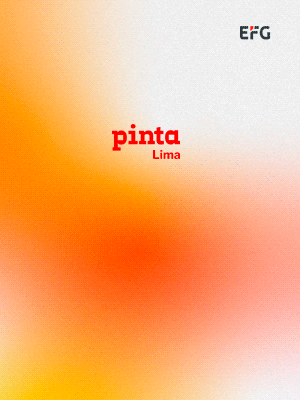FERNANDO LEMOS AND JAPAN REVIEWED AT GULBENKIAN
The approach and review of the work that the multidisciplinary Portuguese-Brazilian artist Fernando Lemos (Lisbon, Portugal, 1926 - São Paulo, Brazil, 2019) made in the framework of his relationship with Japan is the reason for the exhibitions that two centers of the Calouste Gulbenkian Foundation dedicate to his figure. It is worth remembering here that both of them transit in the Japanese concept that stands as the central axis of the new headquarters of the Centro de Arte Moderno, recently inaugurated, and on which the dialogue between both curatorial proposals pivots.
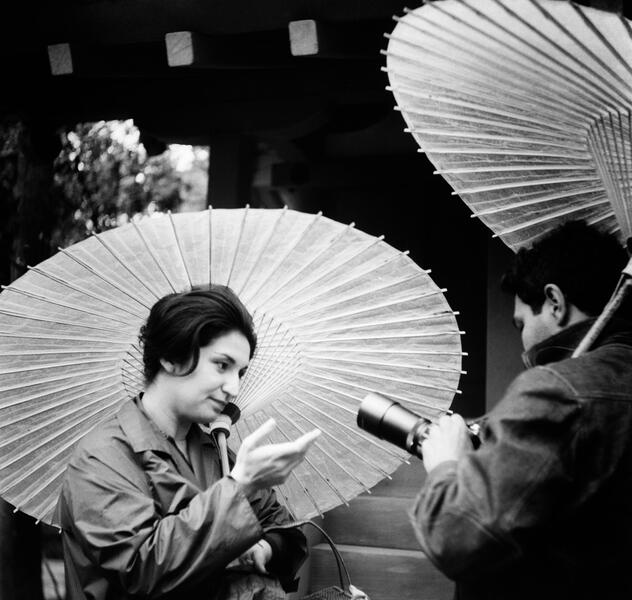
O Calígrafo Ocidental. Fernando Lemos e o Japão (The Western Calligrapher. Fernando Lemos and Japan) brings together an extensive collection of works, mostly photographs and drawings by the artist, hitherto unpublished in Portugal. A large part of this production is set during the stay that Lemos enjoyed in Japan, a country he arrived in 1962, precisely, after receiving a scholarship from the Gulbenkian Foundation to study Japanese calligraphy and art. In his daily life, the artist tried to compile the Japanese daily life and how it had a radical influence on his proposal.
Organized in six different sections, the exhibition incites to enjoy drawing as something more than a mere technique, elevating it, in his case, to a calligraphic act that seeks its space in a society built around the human and the architectural. The relationship between the drawings and photographs that make up this exhibition act with some of his other works made in different media, but also with Japanese prints and production of other artists in the collection of the institution and that have been arranged for their interrelation.
This exhibition is complemented by Espólio de Fernando Lemos (Fernando Lemos’ Documentary Collection), a compilation of documents about his experience in Japan selected from Fernando Lemos's personal archive and donated to the institution in 2023. Part of the bibliographic and archival interest lies, especially, in Lemos's participation in the Brazilian Pavilion at the 5th Tokyo International Trade Fair Exhibition, as responsible for the graphic design of the interiors and the materials distributed, a facet that he also experimented in the publishing industry and that is also presented in the tour with the exhibition of books and magazines designed or illustrated by the artist and that were published both in Portugal and in Brazil.
-
Fernando Lemos, «Convite a visitação – Tokyo», 1963 (impressa em 2018).
-
Fernando Lemos, «Convite a visitação – Tokyo», 1963 (impressa em 2018).
-
Fernando Lemos, «Design Final», 1963 (impressa em 2018)
-
Fernando Lemos, Sem título, 1954
-
Fernando Lemos, Sem título, 1963.
-
Fernando Lemos, Sem título, s. d.
-
Fernando Lemos’ Documentary Collection
O Calígrafo Ocidental. Fernando Lemos e o Japão can be seen until January 20 at the Engawa Space of the Centro de Arte Moderna Gulbenkian, Marquês de Fronteira, 2, Lisbon (Portugal). Espólio de Fernando Lemos is on view through March 17 at Átrio Biblioteca de Arte Gulbenkian, Avenida de Berna 45A, Lisbon (Portugal).
Related Topics
May interest you
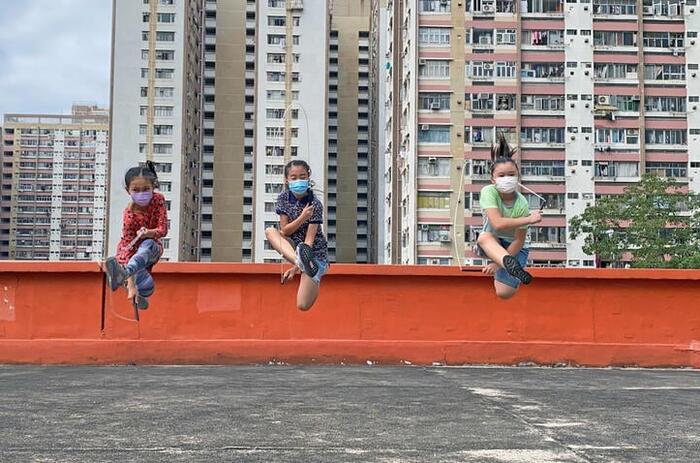
Francis Alÿs (Antwerp, Belgium, 1959) began, at the end of the last century, to abandon the exclusivity of his body as the subject of the actions of his artistic proposal to begin to explore the possibility of finding and employing other subjects for this purpose. With this idea, the figure of children gained more and more importance in his production and became the sign of identity of a new stage for the new millennium.
ALŸS AND THE COLLABORATIVE PHILOSOPHY OF THE GAME AT SERRALVES
Francis Alÿs (Antwerp, Belgium, 1959) began, at the end of the last century, to abandon the exclusivity of his body as the subject of the actions of his artistic proposal to begin to explore the possibility of finding and employing other subjects for this purpose. With this idea, the figure of children gained more and more importance in his production and became the sign of identity of a new stage for the new millennium.

Francis Alÿs (Antwerp, Belgium, 1959) began, at the end of the last century, to abandon the exclusivity of his body as the subject of the actions of his artistic proposal to begin to explore the possibility of finding and employing other subjects for this purpose. With this idea, the figure of children gained more and more importance in his production and became the sign of identity of a new stage for the new millennium.
ALŸS AND THE COLLABORATIVE PHILOSOPHY OF THE GAME AT SERRALVES
Francis Alÿs (Antwerp, Belgium, 1959) began, at the end of the last century, to abandon the exclusivity of his body as the subject of the actions of his artistic proposal to begin to explore the possibility of finding and employing other subjects for this purpose. With this idea, the figure of children gained more and more importance in his production and became the sign of identity of a new stage for the new millennium.
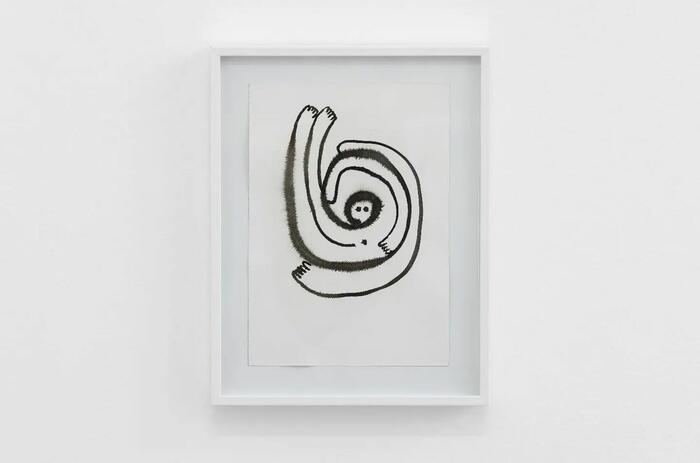
The Kunsthalle Lissabon presents Quinze Anos de Amor na República dos Pangolins (Fifteen Years of Love at the Pangolin Republic), the third and last exhibition with which the institution celebrates its fifteenth anniversary. On this occasion, the center has invited curator Filipa Ramos, one of the Portuguese professionals with the most international projection, who has managed to put together a roster of artists with a strong Latin American presence, with Ad Minoliti, Amalia Pica, Daniel Gustav Cramer, Flora Rebollo, Gabriel Chaile, Haris Epaminonda, Irene Kopelman, Jonathas de Andrade, Luís Lázaro Matos, Mariana Caló and Francisco Queimadela, Mounira Al Solh, Nuno Sousa Vieira, Sheroanawe Hakihiiwe, Sol Calero, Teresa Solar Abboud and Wilfredo Prieto.
LATIN AMERICA AT THE XV ANNIVERSARY OF KUNSTHALLE LISSABON
The Kunsthalle Lissabon presents Quinze Anos de Amor na República dos Pangolins (Fifteen Years of Love at the Pangolin Republic), the third and last exhibition with which the institution celebrates its fifteenth anniversary. On this occasion, the center has invited curator Filipa Ramos, one of the Portuguese professionals with the most international projection, who has managed to put together a roster of artists with a strong Latin American presence, with Ad Minoliti, Amalia Pica, Daniel Gustav Cramer, Flora Rebollo, Gabriel Chaile, Haris Epaminonda, Irene Kopelman, Jonathas de Andrade, Luís Lázaro Matos, Mariana Caló and Francisco Queimadela, Mounira Al Solh, Nuno Sousa Vieira, Sheroanawe Hakihiiwe, Sol Calero, Teresa Solar Abboud and Wilfredo Prieto.
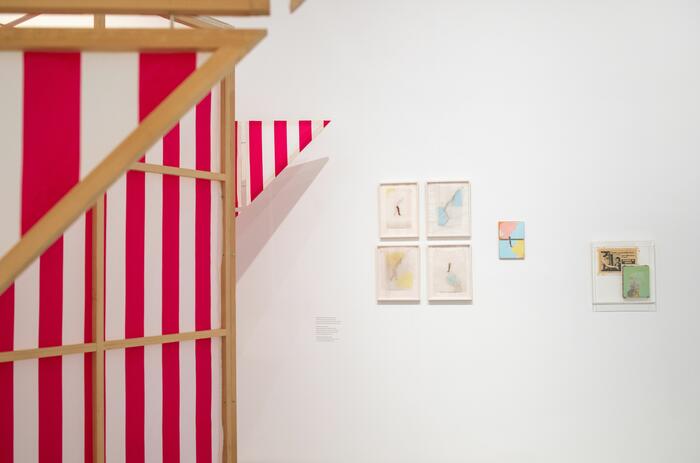
“I imagine the museum as an archipelago. It is not a continent, but an archipelago (...) The idea today is to put the world in contact with the world, to put some parts of the world in contact with other parts of the world... We must multiply the number of worlds inside museums”. Édouard Glissant (Sainte-Marie, Martinique, 1929-Paris, France, 2011) expressed his vision of museum functionality in this metaphorical way in his work Poetics of Relationship (1990).
CAN THE ARCHIPELAGO ENTER THE MUSEUM? IBEROAMERICA IN THE PROPOSAL OF THE HELGA DE ALVEAR MUSEUM
“I imagine the museum as an archipelago. It is not a continent, but an archipelago (...) The idea today is to put the world in contact with the world, to put some parts of the world in contact with other parts of the world... We must multiply the number of worlds inside museums”. Édouard Glissant (Sainte-Marie, Martinique, 1929-Paris, France, 2011) expressed his vision of museum functionality in this metaphorical way in his work Poetics of Relationship (1990).
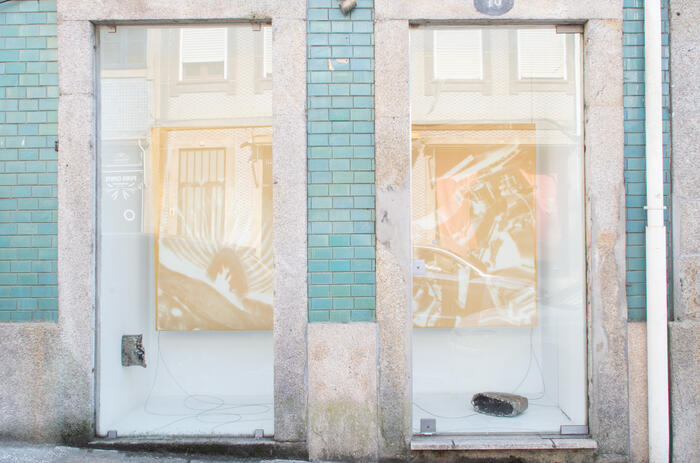
Kubikulo presents in its Oporto gallery Sol Raso, an installation by Gabriel Ribeiro (Rio de Janeiro, Brazil, 1990) that is presented as a material and superficial photographic event on polyurethane foams in which the evolution of the exposure of the materials to the elements and the sun for thirty days is captured.

One of Carlos Bunga's (Porto, Portugal, 1976) most recognizable features is his way of interacting with architectural spaces. This conversation and intervention has a formal character in the use of materials and chromatic ranges, but also by the introduction of everyday objects that, from the very conception of architecture, reside in it to complement it. This led him to be interested in the most temporary and basic architecture, with flaws in its canonical perception, but equally existing in socially unfavorable environments.
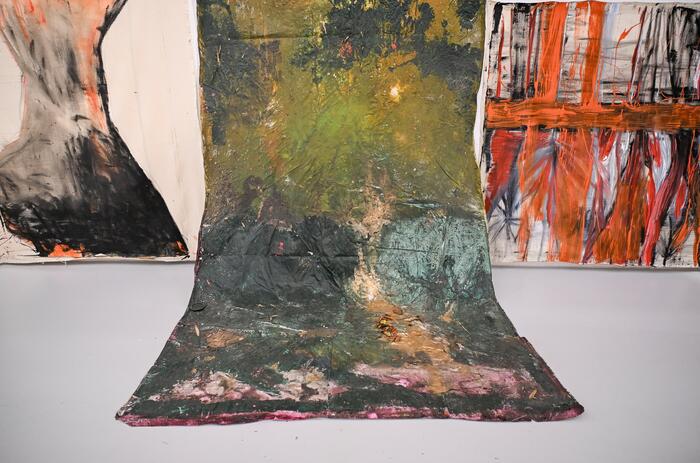
Lisbon's MAAT hosts the exhibition Disco, a show with more than half a thousand works by Vivian Suter (Buenos Aires, Argentina, 1949) with which the institution pays tribute to the pictorial production of the Swiss-Argentine artist and her particular exploration of the interaction with nature and the different techniques and possibilities applicable to painting.
VIVIAN SUTER AND THE RELEVANCE OF SURROUNDINGS AT MAAT IN LISBON
Lisbon's MAAT hosts the exhibition Disco, a show with more than half a thousand works by Vivian Suter (Buenos Aires, Argentina, 1949) with which the institution pays tribute to the pictorial production of the Swiss-Argentine artist and her particular exploration of the interaction with nature and the different techniques and possibilities applicable to painting.
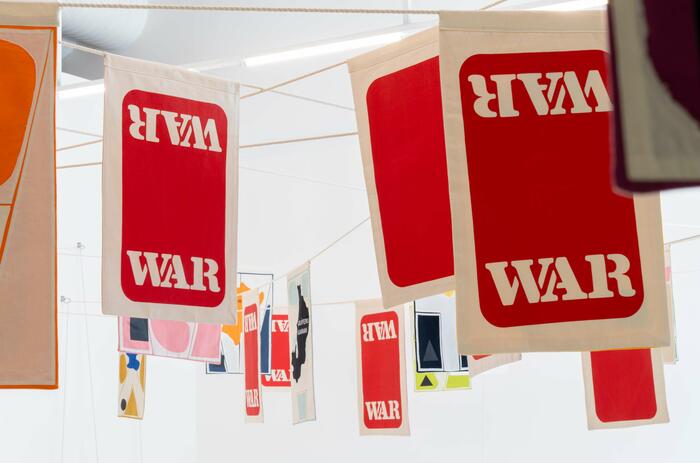
Inhotim is presenting three new projects at the end of 2024, in which the protagonists are Rebeca Carapiá, Pipilotti Rist and Rivane Neuenschwander. Three very different strategies by names of different visibilities and generations, which help to forge a moment in the institution that seems more connected to the fascinating and special nature of the place, without leaving aside lively questions about the strange days we are living through.
MAGIC LIGHTS, BOILING SURFACES - REBECA CARAPIÁ, PIPILOTTI RIST AND RIVANE NEUENSCHWANDER
Inhotim is presenting three new projects at the end of 2024, in which the protagonists are Rebeca Carapiá, Pipilotti Rist and Rivane Neuenschwander. Three very different strategies by names of different visibilities and generations, which help to forge a moment in the institution that seems more connected to the fascinating and special nature of the place, without leaving aside lively questions about the strange days we are living through.
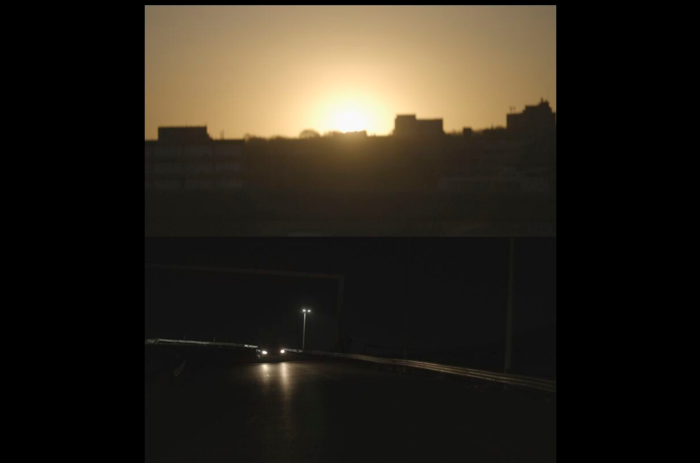
Dim Corners is an evocative exhibition in Johannesburg featuring new works by Brazilian artist Leticia Ramos and South African artist Zen Marie. The exhibition takes into account the city’s frequent energy shortages, and also the recent blackouts that São Paulo had experienced since this project started, weaving a narrative that intertwines the immediate physical impact with the broader, insidious issues of climate change and environmental racism.
LETICIA RAMOS & ZEN MARIE IN A COLLABORATIVE PROJECT
Dim Corners is an evocative exhibition in Johannesburg featuring new works by Brazilian artist Leticia Ramos and South African artist Zen Marie. The exhibition takes into account the city’s frequent energy shortages, and also the recent blackouts that São Paulo had experienced since this project started, weaving a narrative that intertwines the immediate physical impact with the broader, insidious issues of climate change and environmental racism.

Francis Alÿs (Antwerp, Belgium, 1959) began, at the end of the last century, to abandon the exclusivity of his body as the subject of the actions of his artistic proposal to begin to explore the possibility of finding and employing other subjects for this purpose. With this idea, the figure of children gained more and more importance in his production and became the sign of identity of a new stage for the new millennium.
ALŸS AND THE COLLABORATIVE PHILOSOPHY OF THE GAME AT SERRALVES
Francis Alÿs (Antwerp, Belgium, 1959) began, at the end of the last century, to abandon the exclusivity of his body as the subject of the actions of his artistic proposal to begin to explore the possibility of finding and employing other subjects for this purpose. With this idea, the figure of children gained more and more importance in his production and became the sign of identity of a new stage for the new millennium.

The Kunsthalle Lissabon presents Quinze Anos de Amor na República dos Pangolins (Fifteen Years of Love at the Pangolin Republic), the third and last exhibition with which the institution celebrates its fifteenth anniversary. On this occasion, the center has invited curator Filipa Ramos, one of the Portuguese professionals with the most international projection, who has managed to put together a roster of artists with a strong Latin American presence, with Ad Minoliti, Amalia Pica, Daniel Gustav Cramer, Flora Rebollo, Gabriel Chaile, Haris Epaminonda, Irene Kopelman, Jonathas de Andrade, Luís Lázaro Matos, Mariana Caló and Francisco Queimadela, Mounira Al Solh, Nuno Sousa Vieira, Sheroanawe Hakihiiwe, Sol Calero, Teresa Solar Abboud and Wilfredo Prieto.
LATIN AMERICA AT THE XV ANNIVERSARY OF KUNSTHALLE LISSABON
The Kunsthalle Lissabon presents Quinze Anos de Amor na República dos Pangolins (Fifteen Years of Love at the Pangolin Republic), the third and last exhibition with which the institution celebrates its fifteenth anniversary. On this occasion, the center has invited curator Filipa Ramos, one of the Portuguese professionals with the most international projection, who has managed to put together a roster of artists with a strong Latin American presence, with Ad Minoliti, Amalia Pica, Daniel Gustav Cramer, Flora Rebollo, Gabriel Chaile, Haris Epaminonda, Irene Kopelman, Jonathas de Andrade, Luís Lázaro Matos, Mariana Caló and Francisco Queimadela, Mounira Al Solh, Nuno Sousa Vieira, Sheroanawe Hakihiiwe, Sol Calero, Teresa Solar Abboud and Wilfredo Prieto.

“I imagine the museum as an archipelago. It is not a continent, but an archipelago (...) The idea today is to put the world in contact with the world, to put some parts of the world in contact with other parts of the world... We must multiply the number of worlds inside museums”. Édouard Glissant (Sainte-Marie, Martinique, 1929-Paris, France, 2011) expressed his vision of museum functionality in this metaphorical way in his work Poetics of Relationship (1990).
CAN THE ARCHIPELAGO ENTER THE MUSEUM? IBEROAMERICA IN THE PROPOSAL OF THE HELGA DE ALVEAR MUSEUM
“I imagine the museum as an archipelago. It is not a continent, but an archipelago (...) The idea today is to put the world in contact with the world, to put some parts of the world in contact with other parts of the world... We must multiply the number of worlds inside museums”. Édouard Glissant (Sainte-Marie, Martinique, 1929-Paris, France, 2011) expressed his vision of museum functionality in this metaphorical way in his work Poetics of Relationship (1990).

Kubikulo presents in its Oporto gallery Sol Raso, an installation by Gabriel Ribeiro (Rio de Janeiro, Brazil, 1990) that is presented as a material and superficial photographic event on polyurethane foams in which the evolution of the exposure of the materials to the elements and the sun for thirty days is captured.

One of Carlos Bunga's (Porto, Portugal, 1976) most recognizable features is his way of interacting with architectural spaces. This conversation and intervention has a formal character in the use of materials and chromatic ranges, but also by the introduction of everyday objects that, from the very conception of architecture, reside in it to complement it. This led him to be interested in the most temporary and basic architecture, with flaws in its canonical perception, but equally existing in socially unfavorable environments.

Lisbon's MAAT hosts the exhibition Disco, a show with more than half a thousand works by Vivian Suter (Buenos Aires, Argentina, 1949) with which the institution pays tribute to the pictorial production of the Swiss-Argentine artist and her particular exploration of the interaction with nature and the different techniques and possibilities applicable to painting.
VIVIAN SUTER AND THE RELEVANCE OF SURROUNDINGS AT MAAT IN LISBON
Lisbon's MAAT hosts the exhibition Disco, a show with more than half a thousand works by Vivian Suter (Buenos Aires, Argentina, 1949) with which the institution pays tribute to the pictorial production of the Swiss-Argentine artist and her particular exploration of the interaction with nature and the different techniques and possibilities applicable to painting.

Inhotim is presenting three new projects at the end of 2024, in which the protagonists are Rebeca Carapiá, Pipilotti Rist and Rivane Neuenschwander. Three very different strategies by names of different visibilities and generations, which help to forge a moment in the institution that seems more connected to the fascinating and special nature of the place, without leaving aside lively questions about the strange days we are living through.
MAGIC LIGHTS, BOILING SURFACES - REBECA CARAPIÁ, PIPILOTTI RIST AND RIVANE NEUENSCHWANDER
Inhotim is presenting three new projects at the end of 2024, in which the protagonists are Rebeca Carapiá, Pipilotti Rist and Rivane Neuenschwander. Three very different strategies by names of different visibilities and generations, which help to forge a moment in the institution that seems more connected to the fascinating and special nature of the place, without leaving aside lively questions about the strange days we are living through.

Dim Corners is an evocative exhibition in Johannesburg featuring new works by Brazilian artist Leticia Ramos and South African artist Zen Marie. The exhibition takes into account the city’s frequent energy shortages, and also the recent blackouts that São Paulo had experienced since this project started, weaving a narrative that intertwines the immediate physical impact with the broader, insidious issues of climate change and environmental racism.
LETICIA RAMOS & ZEN MARIE IN A COLLABORATIVE PROJECT
Dim Corners is an evocative exhibition in Johannesburg featuring new works by Brazilian artist Leticia Ramos and South African artist Zen Marie. The exhibition takes into account the city’s frequent energy shortages, and also the recent blackouts that São Paulo had experienced since this project started, weaving a narrative that intertwines the immediate physical impact with the broader, insidious issues of climate change and environmental racism.

Francis Alÿs (Antwerp, Belgium, 1959) began, at the end of the last century, to abandon the exclusivity of his body as the subject of the actions of his artistic proposal to begin to explore the possibility of finding and employing other subjects for this purpose. With this idea, the figure of children gained more and more importance in his production and became the sign of identity of a new stage for the new millennium.
ALŸS AND THE COLLABORATIVE PHILOSOPHY OF THE GAME AT SERRALVES
Francis Alÿs (Antwerp, Belgium, 1959) began, at the end of the last century, to abandon the exclusivity of his body as the subject of the actions of his artistic proposal to begin to explore the possibility of finding and employing other subjects for this purpose. With this idea, the figure of children gained more and more importance in his production and became the sign of identity of a new stage for the new millennium.

The Kunsthalle Lissabon presents Quinze Anos de Amor na República dos Pangolins (Fifteen Years of Love at the Pangolin Republic), the third and last exhibition with which the institution celebrates its fifteenth anniversary. On this occasion, the center has invited curator Filipa Ramos, one of the Portuguese professionals with the most international projection, who has managed to put together a roster of artists with a strong Latin American presence, with Ad Minoliti, Amalia Pica, Daniel Gustav Cramer, Flora Rebollo, Gabriel Chaile, Haris Epaminonda, Irene Kopelman, Jonathas de Andrade, Luís Lázaro Matos, Mariana Caló and Francisco Queimadela, Mounira Al Solh, Nuno Sousa Vieira, Sheroanawe Hakihiiwe, Sol Calero, Teresa Solar Abboud and Wilfredo Prieto.
LATIN AMERICA AT THE XV ANNIVERSARY OF KUNSTHALLE LISSABON
The Kunsthalle Lissabon presents Quinze Anos de Amor na República dos Pangolins (Fifteen Years of Love at the Pangolin Republic), the third and last exhibition with which the institution celebrates its fifteenth anniversary. On this occasion, the center has invited curator Filipa Ramos, one of the Portuguese professionals with the most international projection, who has managed to put together a roster of artists with a strong Latin American presence, with Ad Minoliti, Amalia Pica, Daniel Gustav Cramer, Flora Rebollo, Gabriel Chaile, Haris Epaminonda, Irene Kopelman, Jonathas de Andrade, Luís Lázaro Matos, Mariana Caló and Francisco Queimadela, Mounira Al Solh, Nuno Sousa Vieira, Sheroanawe Hakihiiwe, Sol Calero, Teresa Solar Abboud and Wilfredo Prieto.

“I imagine the museum as an archipelago. It is not a continent, but an archipelago (...) The idea today is to put the world in contact with the world, to put some parts of the world in contact with other parts of the world... We must multiply the number of worlds inside museums”. Édouard Glissant (Sainte-Marie, Martinique, 1929-Paris, France, 2011) expressed his vision of museum functionality in this metaphorical way in his work Poetics of Relationship (1990).
CAN THE ARCHIPELAGO ENTER THE MUSEUM? IBEROAMERICA IN THE PROPOSAL OF THE HELGA DE ALVEAR MUSEUM
“I imagine the museum as an archipelago. It is not a continent, but an archipelago (...) The idea today is to put the world in contact with the world, to put some parts of the world in contact with other parts of the world... We must multiply the number of worlds inside museums”. Édouard Glissant (Sainte-Marie, Martinique, 1929-Paris, France, 2011) expressed his vision of museum functionality in this metaphorical way in his work Poetics of Relationship (1990).

Kubikulo presents in its Oporto gallery Sol Raso, an installation by Gabriel Ribeiro (Rio de Janeiro, Brazil, 1990) that is presented as a material and superficial photographic event on polyurethane foams in which the evolution of the exposure of the materials to the elements and the sun for thirty days is captured.

One of Carlos Bunga's (Porto, Portugal, 1976) most recognizable features is his way of interacting with architectural spaces. This conversation and intervention has a formal character in the use of materials and chromatic ranges, but also by the introduction of everyday objects that, from the very conception of architecture, reside in it to complement it. This led him to be interested in the most temporary and basic architecture, with flaws in its canonical perception, but equally existing in socially unfavorable environments.

Lisbon's MAAT hosts the exhibition Disco, a show with more than half a thousand works by Vivian Suter (Buenos Aires, Argentina, 1949) with which the institution pays tribute to the pictorial production of the Swiss-Argentine artist and her particular exploration of the interaction with nature and the different techniques and possibilities applicable to painting.
VIVIAN SUTER AND THE RELEVANCE OF SURROUNDINGS AT MAAT IN LISBON
Lisbon's MAAT hosts the exhibition Disco, a show with more than half a thousand works by Vivian Suter (Buenos Aires, Argentina, 1949) with which the institution pays tribute to the pictorial production of the Swiss-Argentine artist and her particular exploration of the interaction with nature and the different techniques and possibilities applicable to painting.

Inhotim is presenting three new projects at the end of 2024, in which the protagonists are Rebeca Carapiá, Pipilotti Rist and Rivane Neuenschwander. Three very different strategies by names of different visibilities and generations, which help to forge a moment in the institution that seems more connected to the fascinating and special nature of the place, without leaving aside lively questions about the strange days we are living through.
MAGIC LIGHTS, BOILING SURFACES - REBECA CARAPIÁ, PIPILOTTI RIST AND RIVANE NEUENSCHWANDER
Inhotim is presenting three new projects at the end of 2024, in which the protagonists are Rebeca Carapiá, Pipilotti Rist and Rivane Neuenschwander. Three very different strategies by names of different visibilities and generations, which help to forge a moment in the institution that seems more connected to the fascinating and special nature of the place, without leaving aside lively questions about the strange days we are living through.

Dim Corners is an evocative exhibition in Johannesburg featuring new works by Brazilian artist Leticia Ramos and South African artist Zen Marie. The exhibition takes into account the city’s frequent energy shortages, and also the recent blackouts that São Paulo had experienced since this project started, weaving a narrative that intertwines the immediate physical impact with the broader, insidious issues of climate change and environmental racism.
LETICIA RAMOS & ZEN MARIE IN A COLLABORATIVE PROJECT
Dim Corners is an evocative exhibition in Johannesburg featuring new works by Brazilian artist Leticia Ramos and South African artist Zen Marie. The exhibition takes into account the city’s frequent energy shortages, and also the recent blackouts that São Paulo had experienced since this project started, weaving a narrative that intertwines the immediate physical impact with the broader, insidious issues of climate change and environmental racism.

Francis Alÿs (Antwerp, Belgium, 1959) began, at the end of the last century, to abandon the exclusivity of his body as the subject of the actions of his artistic proposal to begin to explore the possibility of finding and employing other subjects for this purpose. With this idea, the figure of children gained more and more importance in his production and became the sign of identity of a new stage for the new millennium.
ALŸS AND THE COLLABORATIVE PHILOSOPHY OF THE GAME AT SERRALVES
Francis Alÿs (Antwerp, Belgium, 1959) began, at the end of the last century, to abandon the exclusivity of his body as the subject of the actions of his artistic proposal to begin to explore the possibility of finding and employing other subjects for this purpose. With this idea, the figure of children gained more and more importance in his production and became the sign of identity of a new stage for the new millennium.

The Kunsthalle Lissabon presents Quinze Anos de Amor na República dos Pangolins (Fifteen Years of Love at the Pangolin Republic), the third and last exhibition with which the institution celebrates its fifteenth anniversary. On this occasion, the center has invited curator Filipa Ramos, one of the Portuguese professionals with the most international projection, who has managed to put together a roster of artists with a strong Latin American presence, with Ad Minoliti, Amalia Pica, Daniel Gustav Cramer, Flora Rebollo, Gabriel Chaile, Haris Epaminonda, Irene Kopelman, Jonathas de Andrade, Luís Lázaro Matos, Mariana Caló and Francisco Queimadela, Mounira Al Solh, Nuno Sousa Vieira, Sheroanawe Hakihiiwe, Sol Calero, Teresa Solar Abboud and Wilfredo Prieto.
LATIN AMERICA AT THE XV ANNIVERSARY OF KUNSTHALLE LISSABON
The Kunsthalle Lissabon presents Quinze Anos de Amor na República dos Pangolins (Fifteen Years of Love at the Pangolin Republic), the third and last exhibition with which the institution celebrates its fifteenth anniversary. On this occasion, the center has invited curator Filipa Ramos, one of the Portuguese professionals with the most international projection, who has managed to put together a roster of artists with a strong Latin American presence, with Ad Minoliti, Amalia Pica, Daniel Gustav Cramer, Flora Rebollo, Gabriel Chaile, Haris Epaminonda, Irene Kopelman, Jonathas de Andrade, Luís Lázaro Matos, Mariana Caló and Francisco Queimadela, Mounira Al Solh, Nuno Sousa Vieira, Sheroanawe Hakihiiwe, Sol Calero, Teresa Solar Abboud and Wilfredo Prieto.

“I imagine the museum as an archipelago. It is not a continent, but an archipelago (...) The idea today is to put the world in contact with the world, to put some parts of the world in contact with other parts of the world... We must multiply the number of worlds inside museums”. Édouard Glissant (Sainte-Marie, Martinique, 1929-Paris, France, 2011) expressed his vision of museum functionality in this metaphorical way in his work Poetics of Relationship (1990).
CAN THE ARCHIPELAGO ENTER THE MUSEUM? IBEROAMERICA IN THE PROPOSAL OF THE HELGA DE ALVEAR MUSEUM
“I imagine the museum as an archipelago. It is not a continent, but an archipelago (...) The idea today is to put the world in contact with the world, to put some parts of the world in contact with other parts of the world... We must multiply the number of worlds inside museums”. Édouard Glissant (Sainte-Marie, Martinique, 1929-Paris, France, 2011) expressed his vision of museum functionality in this metaphorical way in his work Poetics of Relationship (1990).

Kubikulo presents in its Oporto gallery Sol Raso, an installation by Gabriel Ribeiro (Rio de Janeiro, Brazil, 1990) that is presented as a material and superficial photographic event on polyurethane foams in which the evolution of the exposure of the materials to the elements and the sun for thirty days is captured.

One of Carlos Bunga's (Porto, Portugal, 1976) most recognizable features is his way of interacting with architectural spaces. This conversation and intervention has a formal character in the use of materials and chromatic ranges, but also by the introduction of everyday objects that, from the very conception of architecture, reside in it to complement it. This led him to be interested in the most temporary and basic architecture, with flaws in its canonical perception, but equally existing in socially unfavorable environments.

Lisbon's MAAT hosts the exhibition Disco, a show with more than half a thousand works by Vivian Suter (Buenos Aires, Argentina, 1949) with which the institution pays tribute to the pictorial production of the Swiss-Argentine artist and her particular exploration of the interaction with nature and the different techniques and possibilities applicable to painting.
VIVIAN SUTER AND THE RELEVANCE OF SURROUNDINGS AT MAAT IN LISBON
Lisbon's MAAT hosts the exhibition Disco, a show with more than half a thousand works by Vivian Suter (Buenos Aires, Argentina, 1949) with which the institution pays tribute to the pictorial production of the Swiss-Argentine artist and her particular exploration of the interaction with nature and the different techniques and possibilities applicable to painting.

Inhotim is presenting three new projects at the end of 2024, in which the protagonists are Rebeca Carapiá, Pipilotti Rist and Rivane Neuenschwander. Three very different strategies by names of different visibilities and generations, which help to forge a moment in the institution that seems more connected to the fascinating and special nature of the place, without leaving aside lively questions about the strange days we are living through.
MAGIC LIGHTS, BOILING SURFACES - REBECA CARAPIÁ, PIPILOTTI RIST AND RIVANE NEUENSCHWANDER
Inhotim is presenting three new projects at the end of 2024, in which the protagonists are Rebeca Carapiá, Pipilotti Rist and Rivane Neuenschwander. Three very different strategies by names of different visibilities and generations, which help to forge a moment in the institution that seems more connected to the fascinating and special nature of the place, without leaving aside lively questions about the strange days we are living through.

Dim Corners is an evocative exhibition in Johannesburg featuring new works by Brazilian artist Leticia Ramos and South African artist Zen Marie. The exhibition takes into account the city’s frequent energy shortages, and also the recent blackouts that São Paulo had experienced since this project started, weaving a narrative that intertwines the immediate physical impact with the broader, insidious issues of climate change and environmental racism.
LETICIA RAMOS & ZEN MARIE IN A COLLABORATIVE PROJECT
Dim Corners is an evocative exhibition in Johannesburg featuring new works by Brazilian artist Leticia Ramos and South African artist Zen Marie. The exhibition takes into account the city’s frequent energy shortages, and also the recent blackouts that São Paulo had experienced since this project started, weaving a narrative that intertwines the immediate physical impact with the broader, insidious issues of climate change and environmental racism.

Francis Alÿs (Antwerp, Belgium, 1959) began, at the end of the last century, to abandon the exclusivity of his body as the subject of the actions of his artistic proposal to begin to explore the possibility of finding and employing other subjects for this purpose. With this idea, the figure of children gained more and more importance in his production and became the sign of identity of a new stage for the new millennium.
ALŸS AND THE COLLABORATIVE PHILOSOPHY OF THE GAME AT SERRALVES
Francis Alÿs (Antwerp, Belgium, 1959) began, at the end of the last century, to abandon the exclusivity of his body as the subject of the actions of his artistic proposal to begin to explore the possibility of finding and employing other subjects for this purpose. With this idea, the figure of children gained more and more importance in his production and became the sign of identity of a new stage for the new millennium.

The Kunsthalle Lissabon presents Quinze Anos de Amor na República dos Pangolins (Fifteen Years of Love at the Pangolin Republic), the third and last exhibition with which the institution celebrates its fifteenth anniversary. On this occasion, the center has invited curator Filipa Ramos, one of the Portuguese professionals with the most international projection, who has managed to put together a roster of artists with a strong Latin American presence, with Ad Minoliti, Amalia Pica, Daniel Gustav Cramer, Flora Rebollo, Gabriel Chaile, Haris Epaminonda, Irene Kopelman, Jonathas de Andrade, Luís Lázaro Matos, Mariana Caló and Francisco Queimadela, Mounira Al Solh, Nuno Sousa Vieira, Sheroanawe Hakihiiwe, Sol Calero, Teresa Solar Abboud and Wilfredo Prieto.
LATIN AMERICA AT THE XV ANNIVERSARY OF KUNSTHALLE LISSABON
The Kunsthalle Lissabon presents Quinze Anos de Amor na República dos Pangolins (Fifteen Years of Love at the Pangolin Republic), the third and last exhibition with which the institution celebrates its fifteenth anniversary. On this occasion, the center has invited curator Filipa Ramos, one of the Portuguese professionals with the most international projection, who has managed to put together a roster of artists with a strong Latin American presence, with Ad Minoliti, Amalia Pica, Daniel Gustav Cramer, Flora Rebollo, Gabriel Chaile, Haris Epaminonda, Irene Kopelman, Jonathas de Andrade, Luís Lázaro Matos, Mariana Caló and Francisco Queimadela, Mounira Al Solh, Nuno Sousa Vieira, Sheroanawe Hakihiiwe, Sol Calero, Teresa Solar Abboud and Wilfredo Prieto.

“I imagine the museum as an archipelago. It is not a continent, but an archipelago (...) The idea today is to put the world in contact with the world, to put some parts of the world in contact with other parts of the world... We must multiply the number of worlds inside museums”. Édouard Glissant (Sainte-Marie, Martinique, 1929-Paris, France, 2011) expressed his vision of museum functionality in this metaphorical way in his work Poetics of Relationship (1990).
CAN THE ARCHIPELAGO ENTER THE MUSEUM? IBEROAMERICA IN THE PROPOSAL OF THE HELGA DE ALVEAR MUSEUM
“I imagine the museum as an archipelago. It is not a continent, but an archipelago (...) The idea today is to put the world in contact with the world, to put some parts of the world in contact with other parts of the world... We must multiply the number of worlds inside museums”. Édouard Glissant (Sainte-Marie, Martinique, 1929-Paris, France, 2011) expressed his vision of museum functionality in this metaphorical way in his work Poetics of Relationship (1990).

Kubikulo presents in its Oporto gallery Sol Raso, an installation by Gabriel Ribeiro (Rio de Janeiro, Brazil, 1990) that is presented as a material and superficial photographic event on polyurethane foams in which the evolution of the exposure of the materials to the elements and the sun for thirty days is captured.

One of Carlos Bunga's (Porto, Portugal, 1976) most recognizable features is his way of interacting with architectural spaces. This conversation and intervention has a formal character in the use of materials and chromatic ranges, but also by the introduction of everyday objects that, from the very conception of architecture, reside in it to complement it. This led him to be interested in the most temporary and basic architecture, with flaws in its canonical perception, but equally existing in socially unfavorable environments.

Lisbon's MAAT hosts the exhibition Disco, a show with more than half a thousand works by Vivian Suter (Buenos Aires, Argentina, 1949) with which the institution pays tribute to the pictorial production of the Swiss-Argentine artist and her particular exploration of the interaction with nature and the different techniques and possibilities applicable to painting.
VIVIAN SUTER AND THE RELEVANCE OF SURROUNDINGS AT MAAT IN LISBON
Lisbon's MAAT hosts the exhibition Disco, a show with more than half a thousand works by Vivian Suter (Buenos Aires, Argentina, 1949) with which the institution pays tribute to the pictorial production of the Swiss-Argentine artist and her particular exploration of the interaction with nature and the different techniques and possibilities applicable to painting.

Inhotim is presenting three new projects at the end of 2024, in which the protagonists are Rebeca Carapiá, Pipilotti Rist and Rivane Neuenschwander. Three very different strategies by names of different visibilities and generations, which help to forge a moment in the institution that seems more connected to the fascinating and special nature of the place, without leaving aside lively questions about the strange days we are living through.
MAGIC LIGHTS, BOILING SURFACES - REBECA CARAPIÁ, PIPILOTTI RIST AND RIVANE NEUENSCHWANDER
Inhotim is presenting three new projects at the end of 2024, in which the protagonists are Rebeca Carapiá, Pipilotti Rist and Rivane Neuenschwander. Three very different strategies by names of different visibilities and generations, which help to forge a moment in the institution that seems more connected to the fascinating and special nature of the place, without leaving aside lively questions about the strange days we are living through.

Dim Corners is an evocative exhibition in Johannesburg featuring new works by Brazilian artist Leticia Ramos and South African artist Zen Marie. The exhibition takes into account the city’s frequent energy shortages, and also the recent blackouts that São Paulo had experienced since this project started, weaving a narrative that intertwines the immediate physical impact with the broader, insidious issues of climate change and environmental racism.
LETICIA RAMOS & ZEN MARIE IN A COLLABORATIVE PROJECT
Dim Corners is an evocative exhibition in Johannesburg featuring new works by Brazilian artist Leticia Ramos and South African artist Zen Marie. The exhibition takes into account the city’s frequent energy shortages, and also the recent blackouts that São Paulo had experienced since this project started, weaving a narrative that intertwines the immediate physical impact with the broader, insidious issues of climate change and environmental racism.

